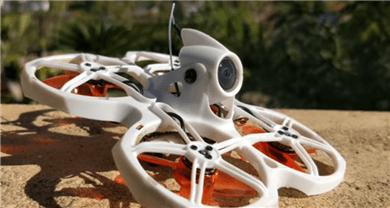
Ovonic lipo battery for micro fpv drone
Why micro drone?
Since drones have really become mainstream, the industry has undergone tremendous changes. In the past few years-there was a time when many people were building super-large helicopters over 450 mm, and gradually, but the trend turned increasingly the smaller plane.
Especially quadrotors like DJI Phantom are so good, fewer people build 450 helicopters, and everyone is building 210 quadrotors or less.
On the other hand, most small drones (except DJI Mavic) are much cheaper than full-size drones. Features are often reduced to save costs, batteries are smaller, and materials used may be cheaper
Another benefit of mini drones is their flexibility in the flight area. You might not fly a full-size drone in a suburban yard (never at home), but Micro Drone in this type of environment. Of course, if you decide to fly any drone indoors, you should be extra careful and use a propeller shield. No matter how small or inconspicuous the propellers appear, keep in mind that these propellers spin quickly and can cause injury if not handled properly.
Besides, since the FAA regulation was released, micro drone has become more and more popular because it can control weight below 250g.
What is a micro drone?
There is no absolute standard for this, but it can simply said that A micro drone is a drone that can support 3” propellers or less, ranging in 110 - 150 mm frame and weighs less than 250 grams. Below 110 mm, there are some different class that was popularized by Tiny Whoop few years ago.

Building micro fpv quadcopter is delicate process, so if you're just beginning we featured recommended tiny whoops to start with, currently avaiable on the market.
What is tiny whoops?
Tiny Whoop is effectively an umbrella term for a micro brushed-motor quadcopter with an FPV camera and transmitter on-board. The full setup generally consists of a quad copter frame with flight controller, motors, receiver, battery, camera (with mount and video transmitter onboard), then a transmitter and video receiver/display unit at the pilot end. The pilot can remotely control the drone whilst receiving a live feed from the front of the craft, displayed in a set of video goggles or on a monitor.
Micro in this case means really tiny, under 8cm in width and length and (ignoring antenna) just 5cm in height! The electric ducted fan (EDF) design not only protect the blades but makes for a more efficient propulsion system. Tiny flight controllers with integrated gyro’s onboard give the craft a shallow learning curve. These features mean the drone can be used in new more challenging flight situations.

The prevalence of miniaturised lightweight, low power camera/transmitter units led people like ourselves to ‘FPV all the things’ from small quadcopters to RC Drift cars and motorbikes. The diminishing size of electronics also meant that quadcopters were also shrinking. Camera/Transmitter units were stuck on-top and wired into the battery and the Whoop was born. Slowly but surely each element of the craft was replaced as members of the FPV community chased performance and or efficiency improvements.
What is so good about them?
Tiny size, making them ideal for flying indoors, through shelves, under desks, wherever.
They are Efficient, with up to 4 minutes of flight from a tiny battery.
Acrobatic Performance, capable of flips, rolls and fast climbs due to their power to weight.
Robust, their ducted design also allows them to shrug off most wall impacts.
Inexpensive to purchase and repair. Even the bigger-budget bundles represent great value.
Many on the market are ready to fly, and such accessibility is rare when it comes to FPV.
They are just awesome fun, seriously even if you just want to fly and not tinker.
1S vs 2S Whoops
The 1S (3.7V) and 2S (7.4V) indicate the maximum voltage the whoop can handle. 1S quads can either be brushed motors of sizes 6X15mm or brushless motors of sizes 0603 or even a 08025 on a slightly larger quad like the Emax Tinyhawk for example.
1S is perfect if you plan to fly indoors and strictly indoors only. 1S usually lacks the punch to fly outdoors, meanwhile a 2S is powerful enough to fly outdoors where you have considerable control over the quad even in mild windy conditions. 2S quads can be also flown indoors too, but they are too powerful to handle. You will just keep bumping into things unless you have a bigger house.
If compared from a price point of view both the brushed and brushless quads cost the same. For a long time brushed motors were the choice for a tiny whoop builds and people would get tired of changing brushed motors which have a life span of approximately 100 flights. Hence brushless motors were introduced, not only do brushless motors last long they are much more efficient too.
It all boils down to what kind of flying you want to with your quad. If it’s strictly indoors a 1S quad will suffice, but if you plan on flying in your backyard the extra power from the 2S will definitely help in flying quads and are the better choice.
What Ovonic battery fits tiny whoops?
As a professional manufacturer of lipo batteries, Ovonic has been committed to providing high-quality batteries for models in different fields of RC world. For tiny whoops, Ovonic also introduced tinyhawk battery 80C 450mah 1S 3.8V with JST for Tinyhawk series and 45C 380 2S 7.4v with XT30(Coming soon ) for Betafpv 2S whoop drone Beta75X / Beta75 Pro 2 etc.
And more lipo battery will be add in the future.


Leave a comment